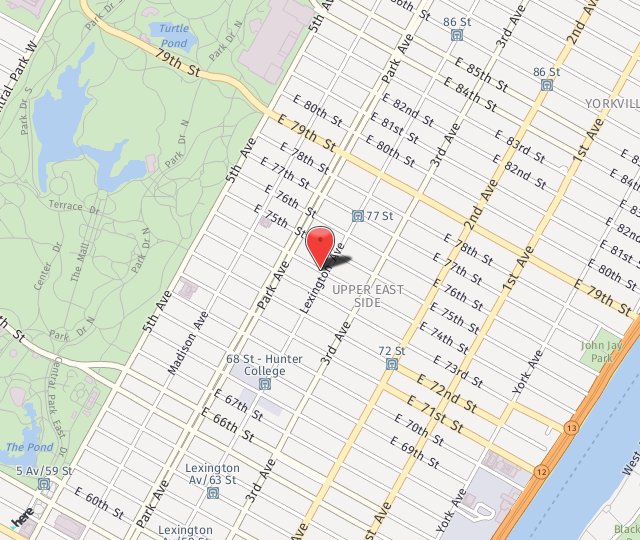What Are Neck Bands?
Neck bands, also called platysma bands, are a consequence of the aging neck. In youth, the flat muscle that surrounds the front of the neck is called the platysma muscle. As we age, the muscle in the front pulls apart, called diastasis and rolls up into bands. These appear as soft tissue bands from just under the chin and can extend to the lower neck.



What Is Platysmaplasty?
Platysmaplasty reduces the appearance of neck bands with just a small incision under the chin. Using a 3-D endoscope, the muscles are identified, partial cut through on both sides, then brought back together in the midline with permanent fixation sutures. This is called a corsette platysmaplasty. If the patient has redundant skin, then a formal neck lift or skin removal is performed with the platysma work.
What Are The Benefits Of A Platysmaplasty Procedure?
This minimally-invasive neck lift technique can successfully correct a number of common concerns, including:
- Prominent neck cords or bands
- Double chin
- Fatty jowls at the chin and jawline areas
- “Turkey wattle” skin that is loose and saggy near the center of the neck
The cosmetic benefits of platysmaplasty are significant. However, patients also appreciate that this procedure may be performed on an outpatient basis and that they can recover comfortably at home over the course of one to two weeks.
“Amazing doctor and staff! Recovery was so easy and they answered all my questions and concerns!” – P.T.
Before And After Surgical Platysmaplasty
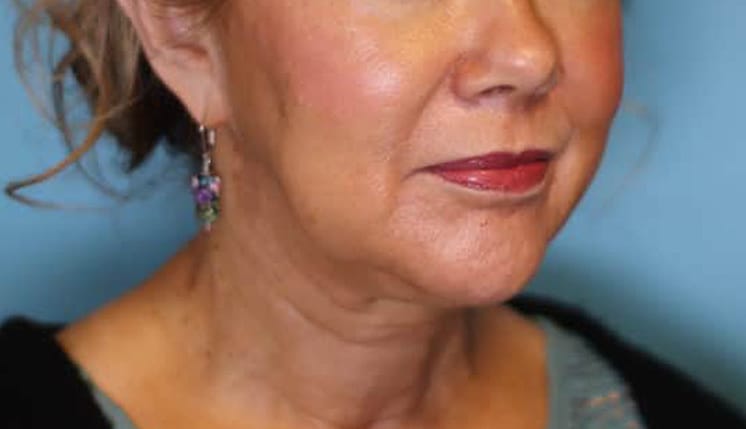
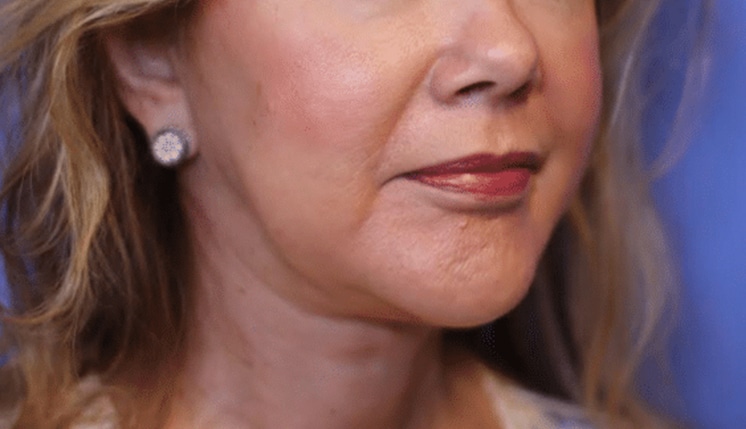
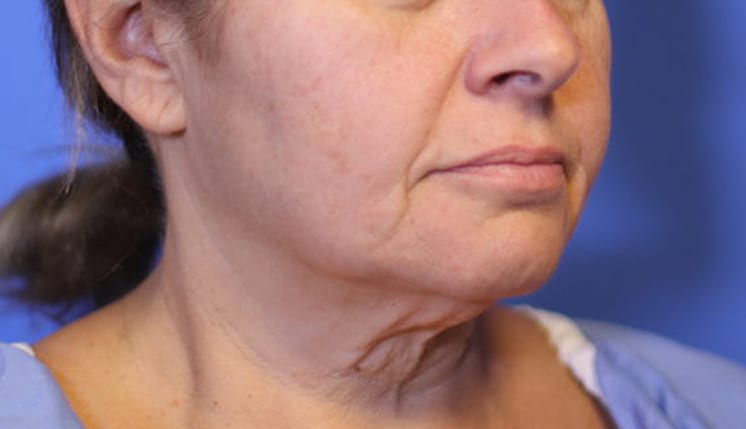

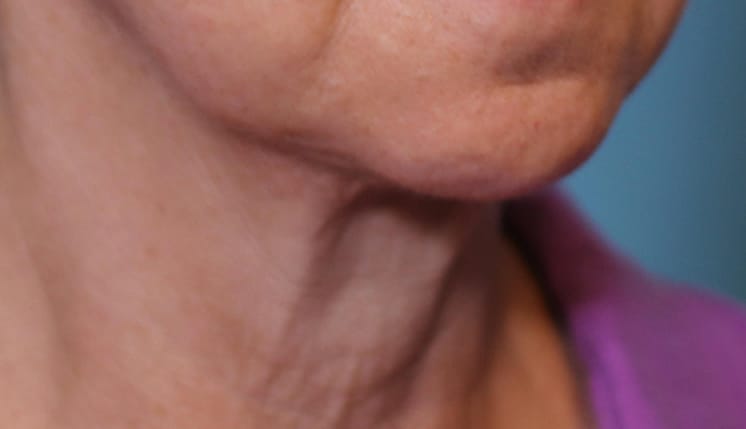
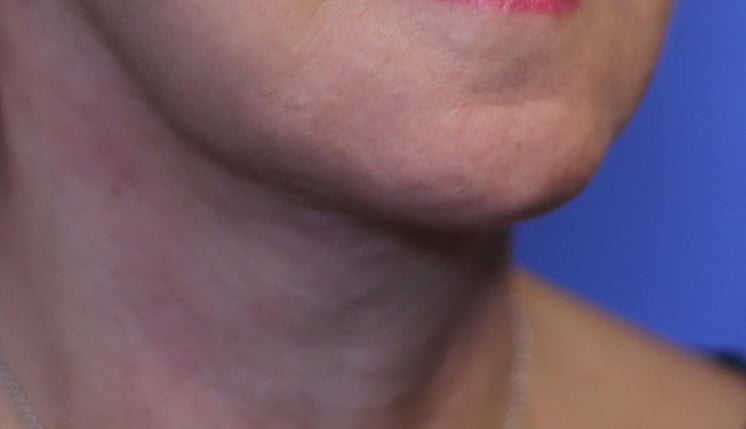
Are There Any Non-Surgical Solutions For Platysma Bands?
Xeomin and other neuromodulators like Botox or Dysport can relax the muscle in 30% of the cases. This is usually in patients under 40 years old. If the bands are toxin resistant, then a formal platysmaplasty is required.
Before And After Non-Surgical Treatment
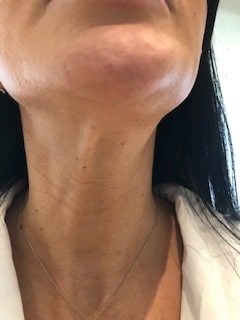
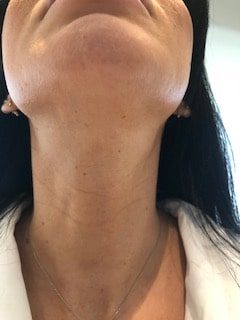
How Is Platysmaplasty Surgery Performed?
The platysmaplasty procedure is performed in a surgical center using general anesthesia. After the patient has been anesthetized, the surgeon makes a small horizontal incision beneath the chin. Here, the resulting scar should be well-hidden.
Through the incision, the two sides of the platysma muscle are brought together into one muscular layer. This joining makes the muscle resistant to new neckbands. It also reshapes the upper neck and jawline to look sharper and younger. Excess fat in the neck may also be removed during the procedure to achieve optimal contouring.
The weakened and stretched platysma muscle is tightened using multiple rows of stitches. The procedure is often referred to as corset platysmaplasty because this stitching technique resembles lacing up a corset.
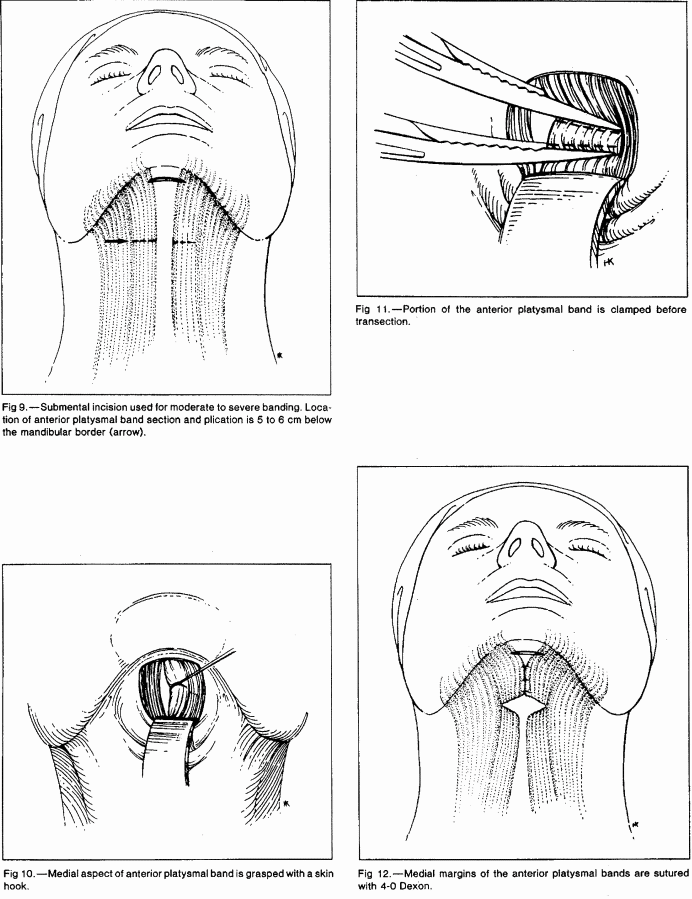
“The entire process of evaluation, thru survey to post OP visits were all done at a great pace with complete review of issues, options and solutions. Was totally comfortable at all times and felt like I was the only patient.” –J.L.
Does A Platysmaplasty Procedure Require Anesthesia?
Surgeons routinely perform platysmaplasty with general anesthesia, but this can also be done under topical, oral or IV sedation. After surgery, patients spend time in a recovery area to allow for any anesthesia to wear off. Once alert, patients are released to a loved one who will escort them home and remain with them for the remainder of the day.
How Long Does It Take To Recover From Platysmaplasty Surgery?
Patients who undergo the platysmaplasty procedure can expect to feel tightness in the neck during their initial recovery. This sensation subsides over time as tightened tissues and nerve endings settle into their new norm. Only a few days of downtime may be needed after this technique, provided that no other procedures are performed simultaneously. The inclusion of additional procedures, such as neck liposuction, neck lift or a facelift, may result in up to two weeks of relative downtime before patients may resume normal activities.
Platysmaplasty usually results in some degree of swelling and bruising. This may extend from the neck to the jaw and ears. Usually, bruising decreases within a few days. Patients can see a noticeable difference in their neck immediately after surgery. As swelling subsides over one to three months, the outcome of surgery becomes fully apparent.
Are There Risks To A Platysmaplasty Procedure?
Platysmaplasty is a minimally-invasive procedure that is carefully performed by a board-certified plastic surgeon. It is generally considered very safe, with minimal risk of complications. As a surgical procedure, however, a platysmaplasty is likely to incur mild discomfort that lasts a few days.
There are minor risks of nerve damage, skin discoloration, infection, bleeding, bruising, and swelling with every surgical procedure. Adverse reaction to anesthesia is a possible risk, but is rare and will be discussed with your anesthesiologists.
Schedule A Consultation
If your neck is giving away your age, contact us today to schedule your platysmaplasty consultation! Our NYC office can be reached at 212-288-1500.

